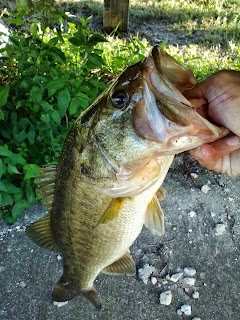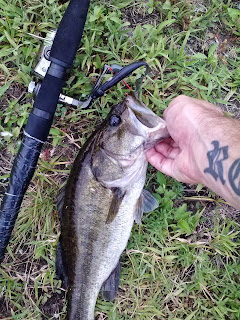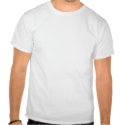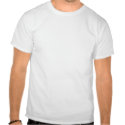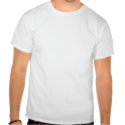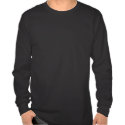
black and white largemouth bass chasing lure. tee shirt by cloudnineproductions
Design unique customizable clothing online at Zazzle.

vintage tarpon fishing tees by cloudnineproductions
Use Zazzle's online t shirt designer.
10 Tips for Catching Big Bass
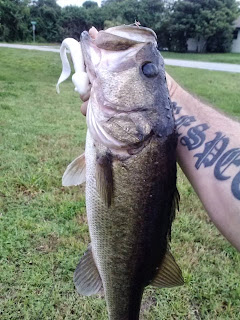 Implement these 10 tips for catching big bass on your next trip to the water. These bass fishing tips are easy to use and should help to get bigger bass onto your hook. Don't be afraid to experiment and adjust these or other tips for bass fishing to see what works best for you in the waters that you fish.
Implement these 10 tips for catching big bass on your next trip to the water. These bass fishing tips are easy to use and should help to get bigger bass onto your hook. Don't be afraid to experiment and adjust these or other tips for bass fishing to see what works best for you in the waters that you fish.Tips for Catching Big Bass #1
Learn to fish a variety of lures. At times catching bass will require fishing deep, fishing shallow, fishing quickly, and fishing slowly. Sometimes bass will strike only certain lures in certain patterns. Being ready to present the type of lure how the bass wants it is very important.
Tips for Catching Big Bass #2
When fishing in a boat, have multiple poles with different lures rigged and ready to go. Being able to switch between lure patterns and styles quickly will help you to present what the bass want.
Tips for Catching Big Bass #3
Locating deep water structure can be a key to landing big bass, especially in the summer heat when bass will be deep. Depth finders and maps are great for locating submerged structure.
Tips for Catching Big Bass #4
Be patient. It may take a few casts to the same spot to get a big bass to strike. If an area looks fantastic but doesn't result in a strike, move on then come back later with a different lure.
Tips for Catching Big Bass #5
Keep your tackle box organized. Being able to find what you want and get it tied on quickly can be important. Always hit the water ready to fish with a well organized tackle box.
Tips for Catching Big Bass #6
Keep your hooks sharp! Dull hooks result in missed fish. Hooks can either be sharpened or replaced, but they need to be sharp.
Tips for Catching Big Bass #7
Look for overlooked areas of strong producing lakes and rivers. Some bodies of water simply produce bigger bass than others but they attract a lot of attention. Fish these waters, but look for areas that other anglers overlook. A good start is to get well away from the boat docks before beginning to fish. Leaving the bass boat at home and using a canoe or other small boat to go up creek mouths and coves to fish is a good idea as well.
Tips for Catching Big Bass #8
Stay out late for big bass. When the sun goes down and the other anglers and boaters go home, stay on the lake and fish. Casting weightless artificial worms near structure in the dark and slowly retrieving with a few twitches has produced some of my largest bass.
Tips for Catching Big Bass #9
Use bigger lures and baits. I've caught surprisingly large bass on small lures, but larger lures will help to keep bluegills and other small fish from getting hooked. By avoiding the smaller fish an angler can spend more time concentrating on hooking big bass and not reeling in small ones.
Tips for Catching Big Bass #10
Go bass fishing now. One of the best ways to catch big bass is to simply go fishing more often. The more you fish the more likely your chances of hooking into a big one.
Sleep or Catch Monster Bass?
November/December 1998
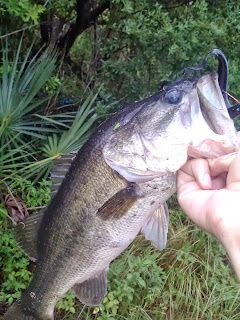 Imagine sitting in your boat
during an August afternoon around 1:30, fishing your favorite spot on your
favorite lake. Even the most avid bass angler might be less than excited - 20
boats already fished this spot, blistering heat, jet skiers, clear water,
sunburn, and tough fishing. Not always. I just finished 2 guided trips this
August at Clear Lake, California, where our 5 largest bass weighed thirty-one
pounds two ounces, and thirty-four pounds five ounces.
Imagine sitting in your boat
during an August afternoon around 1:30, fishing your favorite spot on your
favorite lake. Even the most avid bass angler might be less than excited - 20
boats already fished this spot, blistering heat, jet skiers, clear water,
sunburn, and tough fishing. Not always. I just finished 2 guided trips this
August at Clear Lake, California, where our 5 largest bass weighed thirty-one
pounds two ounces, and thirty-four pounds five ounces.
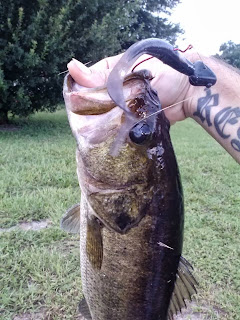 Most anglers who have sampled night
fishing do it in the summer, and quit after the first cold night.
Most anglers who have sampled night
fishing do it in the summer, and quit after the first cold night. Bundle up and stick with it. It
just gets better! Fall night fishing is very steady, as is the weather. Spring
fishing, with its unstable weather patterns, is usually feast or famine. If cold
fronts can slow daytime fishing, they can totally kill night fishing. But, if
the weather pattern is
steady, or better yet, a warming trend is occurring, fall and spring fishing is
the best time for trophy bass. Recent fall catches have included 5-fish limits
of forty-three and 1/4 pounds (Oct. 20), thirty-eight pounds nine ounces (Dec.
3), and 10 bass for fifty-five and 1/4 pounds (Dec. 20). This spring I caught 3
bass within 2 hours that weighed twenty-five pounds two ounces. I have mentioned
these catches to get you excited enough to continue reading !
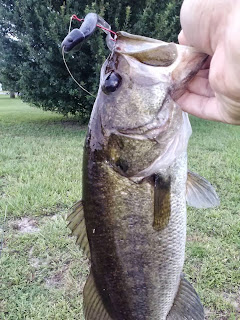
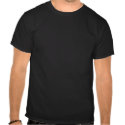
Keep Calm and Fish On - customizable colours T-shirt by baxella
Find more Fishing T-Shirts at Zazzle
 Imagine sitting in your boat
during an August afternoon around 1:30, fishing your favorite spot on your
favorite lake. Even the most avid bass angler might be less than excited - 20
boats already fished this spot, blistering heat, jet skiers, clear water,
sunburn, and tough fishing. Not always. I just finished 2 guided trips this
August at Clear Lake, California, where our 5 largest bass weighed thirty-one
pounds two ounces, and thirty-four pounds five ounces.
Imagine sitting in your boat
during an August afternoon around 1:30, fishing your favorite spot on your
favorite lake. Even the most avid bass angler might be less than excited - 20
boats already fished this spot, blistering heat, jet skiers, clear water,
sunburn, and tough fishing. Not always. I just finished 2 guided trips this
August at Clear Lake, California, where our 5 largest bass weighed thirty-one
pounds two ounces, and thirty-four pounds five ounces.
Clear Lake is a major summer recreational
center and was even hosting a 113 boat W.O.N. tournament during my second trip.
None of this bothered us because we were fishing the other 1:30 -- A.M.!
The temperature had dropped about 30 degrees to a pleasant 70 degrees. There
were no boats in sight, and we were catching large bass, the type rarely caught
during hot summer days, and none of us suffered any moonburn!
After 23 years of night fishing for bass,
I feel I have put some of the pieces of the puzzle together. I would like to
share this information with our Inside Line readers. Most of the 100 or
so bass over 9 pounds that my clients and I have caught, were hooked during the
first and last hour of light, and at night. I fish for bass at night every month
of the year except January, when I have a heavy seminar schedule. My favorite
months are March and April, as well as mid-September through
December.
Seasonal Considerations
 Most anglers who have sampled night
fishing do it in the summer, and quit after the first cold night.
Most anglers who have sampled night
fishing do it in the summer, and quit after the first cold night.
Two Nighttime Advantages
There are two major reasons why I love to
fish at night for bass, besides the obvious ones I mentioned in the opening
paragraph. The first is easy enough to understand: I love to hunt for trophy
bass year-round. Night fishing gives me the opportunity to do this. Seventy
percent of my clients now want to book a night trip where the odds are much
better to stick an 8-pound or better fish.
My second reason may be a new thought for
some readers, but it is the fuel that drives my enthusiasm for night fishing.
After the sun sets, I am firmly convinced that every cast has the possibility of
making my clients, or me, a hero. Sure, there are slow periods some nights and
an occasional night where the skunk will bite. Even on those nights I stare at
my fluorescent line in the soft blue glow of my black lights (sounds funny, I
know), watching for a slight twitch or a movement to one side.
How Darkness Helps

Line watching is easier at night because
it is at least five times more visible under a black light. My clients say their
lines look like ropes. I still get a thrill when people cast for the first time
with a black light on. It's like I gave them a new toy! Daytime distractions are
everywhere. We are always looking around at something and not paying enough
attention to our line, which is often hard to see anyway. At night we can see
our line perfectly, and there are few distractions.
Under the cover of darkness, every cast is
an event because the biggest fish in the lake could be inches away, ready to
suck in your bait! Other than first light, it is difficult to sustain that
confidence and focus all day long, even in the spring. This is not a problem at
night. Time flies when you're thinking big! I might add that a typical night
trip would include the last hour of light. Since most weekend and tournament
angling is early morning oriented, trophy bass that have lived in a lake for up
to 12 years, sense that evening feeding is quieter and uninterrupted. Several of
my bass over 11 pounds have been caught during the last hour of light. And,
there were no other fishermen around.
The Best Hours
Experience has taught me that
most nocturnal feeding seems to begin after midnight in hot summer months.
Darkness doesn't set in until 9:00 or so and it takes a while for the surface
temperature to cool a bit. As fall arrives and leads into winter, feeding gets
progressively earlier. Also, the water temperature dynamic changes as fish are
now trying to feed during the warmest water period (late afternoon, early
evening), in a body of water that is rapidly cooling.
The last hour of light that I am so fond
of is never better than mid-October through November. I once talked a client,
who wanted to start at dark during a Thanksgiving weekend, into feasting earlier
and starting an hour before dark. Good decision! The 7th cast of the trip he
landed an 11-pound 8 1/2-ounce bass on a Rodstrainer jig with a #180 bluegill
color grub trailer. Funny, he always agreed with everything I said after
that.
This early evening feeding habit will
continue right through the spawn. If the winter night is especially mild, bass
can be caught all night long. As summer approaches, feeding becomes later and
later as bass seek cooler water, and the cycle is complete. Today we make fun of
the "comfort zone" theory of a few decades ago, which said bass needed 68 to
70-degree water to be "happy". We know bass can be caught in water ranging from
38-degrees to around 88-degrees. We must remember, however, that bass are the
most efficient feeders in 55 to 75-degree water, and the closer we can zero in
on that temperature range at night, the more successful we will be.
This means that in the hot months, one
needs to fish into the AM hours for consistent success, while in the colder
months, when darkness comes early, you may have had all the terrific action you
can take by midnight.
Pressured Waters
Before we go any further, I would like to
remind anglers that fishing pressure alters all basic rules of bass fishing. If
you are committed to catching a trophy quality bass, it makes sense that you
should fish during the hours of least fishing pressure. Large bass are
opportunistic feeders, only feeding when conditions are favorable: low light and
minimal fishing pressure. Other than the spawning months, most lunkers choose to
live in deeper, open water areas away from shore. Sometimes they will approach
shallow water during the darkest night, or a stormy, cloudy, windy day. This
determines when and where I choose to night fish. If I guide during a full moon
summer night on a weekend, I will select a large lake because fishing pressure
will be very low. The bass may be a little shallower if the water is not over 80
degrees. I hope these are helpful reminders for summer fishing.
Moon Phase Mysteries
One of the questions I am asked most often
is how does the moon affect night fishing - or does it? There are many theories
espoused about the moon's influence on night fishing, but I have not found many
of them to be consistent. I have caught monster bass during all phases of the
moon. In fact, my personal best bass, 14 pounds 2 ounces, and best limit,
forty-three and a half pounds (5 bass) were caught on an August and October
night of the last quarter moon phase. This phase is considered to be the worst.
I actually caught my 14-pounder on a bet. I'm serious. After a heavy discussion,
a friend bet me I couldn't catch a trophy bass during the last quarter. I won -
BIG!
My hundreds of nights on the water have
shown me three strong relationships between moon phases and night fishing. Every
month I fish, I believe more in these ideas. First of all, in summer months, I
find when I fish around the first quarter, and the moon sets around 1:00 A.M.,
large bass start feeding heavily, both in shallow and deep, especially in clear
water. I find good feeding activity early in the evening before the last quarter
moon rises, around 11:30 P.M. As the moon gets higher, the fishing for larger
bass slows down. These are my favorite times to fish. Not only because the water
is darker, but also the low moon creates shadows everywhere, which leads me to
the second situation I look for.
Whether the moon is partial or full, I
look for shadows caused by bushes and trees, above and below water rock
formations, bluffs, and docks. Even when the moon is full in the summer, it is
lower on the horizon than it is in the winter. So a summer moon is able to
create long shadows which attract, and therefore concentrate the bass. If I am
standing in a dark closet and look out into a well-lit room, I am hidden and can
see everything in the room. This is how most large bass approach feeding at
night.
For example, a rock bluff will begin to
have a big shadow as the moon passes overhead. The bass may suspend until the
shadow forms. All it takes is a four to five-foot shadow for the bass to take up
feeding positions. All the underwater mini-ledges, outcroppings, and boulders
will create their own shadows, allowing the fish to feed at several depths. I
would encourage you to learn which parts of your home lake have shadows at what
time of night. These areas should have deep water access nearby. If you are
fishing the dark of the moon, you don't need to worry about shadows, which
brings up my third impression of moon influence.

Keep Calm and Fish On - customizable colours T-shirt by baxella
Find more Fishing T-Shirts at Zazzle
Fishing the full moon period is the most
popular with bass anglers for many good reasons. Night tournaments are held
during full moon weekends. Bright moon nights are a beautiful outdoor
experience. It is safer to navigate, and one can see the shoreline
better.
Hemphill's Favorite
Though I love fishing all the phases of
the moon, my personal favorite is the dark of the moon. The majority of the bass
over nine pounds that my clients and I have landed have been caught in the dark
of the moon. Though the fish may spread out more, they are usually more
aggressive and shallow. Pitchin' and flippin' are good techniques since many
bass may be less than five feet deep. Most monster bass will still be deeper
than ten feet.
Rockpiles, humps, ledges and walls are my
favorite structures to fish during the darkest nights. DO NOT, under any
circumstances, venture out on a body of water in the dark of the moon that you
do not know as well as your name. I have been blessed with a good sense of
direction and outstanding night vision. Many people struggle in these areas and
therefore should enjoy moonlit fishing trips. If you are not comfortable with
total dark fishing, don't do it. Safety is paramount!
Part two of this essay on night fishing
will appear in the next issue of the Inside Line. I will discuss popular
techniques and lures to catch night bass, where to find them, and even why the
full moon is the BEST time to fish in the winter. How could that be? Stay
tuned!



